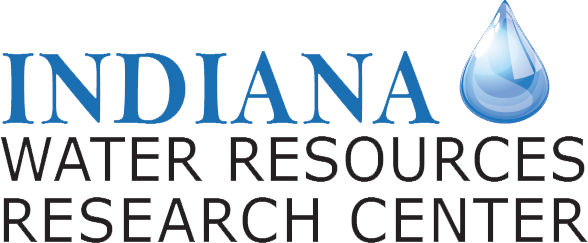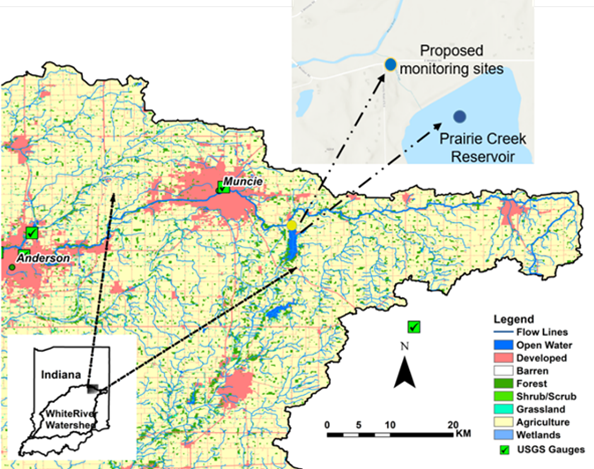Factsheet – Monitoring and assessment of streamflow regime in headwater streams of the Upper White River Watershed
A research project funded by the Indiana Water Resources Research Center through the U.S. Geological Survey’s 104B annual base grants (section 104 of the Water Resources Research Act of 1984, as amended).

Start Date: 2021-09-01
End Date: 2022-08-31
Total Federal Funds: $25,000
Total Non-Federal Funds: $51,235
The headwater region of the White River is the leading contributor of nitrogen to the Gulf of Mexico across the entire Mississippi River Basin. Preliminary long-term water quality analysis has shown increasing nutrient release, indicative of non-point source influence from agriculture. Managing headwater streams is an essential part of watershed management. However, headwater streams have been extensively influenced or have even disappeared as a result of climate change and human activities, which directly deteriorates habitat in these ecologically vulnerable areas.
To date, substantial investment has established watershed plans and supported the adaptation of conservation practice in the region. Models are being developed to target the implementation of additional conservation practices in the Upper White River’s agricultural headwaters, but recent studies have determined there is inadequate flow data from the region, making it difficult to calibrate hydrologic models and support detailed conservation practices. This study analyzed existing streamflow data to analyze the hydrologic alteration in the region, interpret factors influence the changes, and expand the network of streamflow monitoring gaging sites.
Research Objectives
1. Examine the environmental flow statistics.
2. Connect the flow regime alteration with climate change and anthropogenic factors such as land use change and dam construction/removal.
3. Build new flow and water level monitoring sites.
4. Collect and provide data in a usable form to the public.
Data collected from this project are publicly available through Ball State University.

Upper White River Watershed, Indiana
Researcher Profile

Major Conclusions & Significance
What Does This Mean For Indiana?



